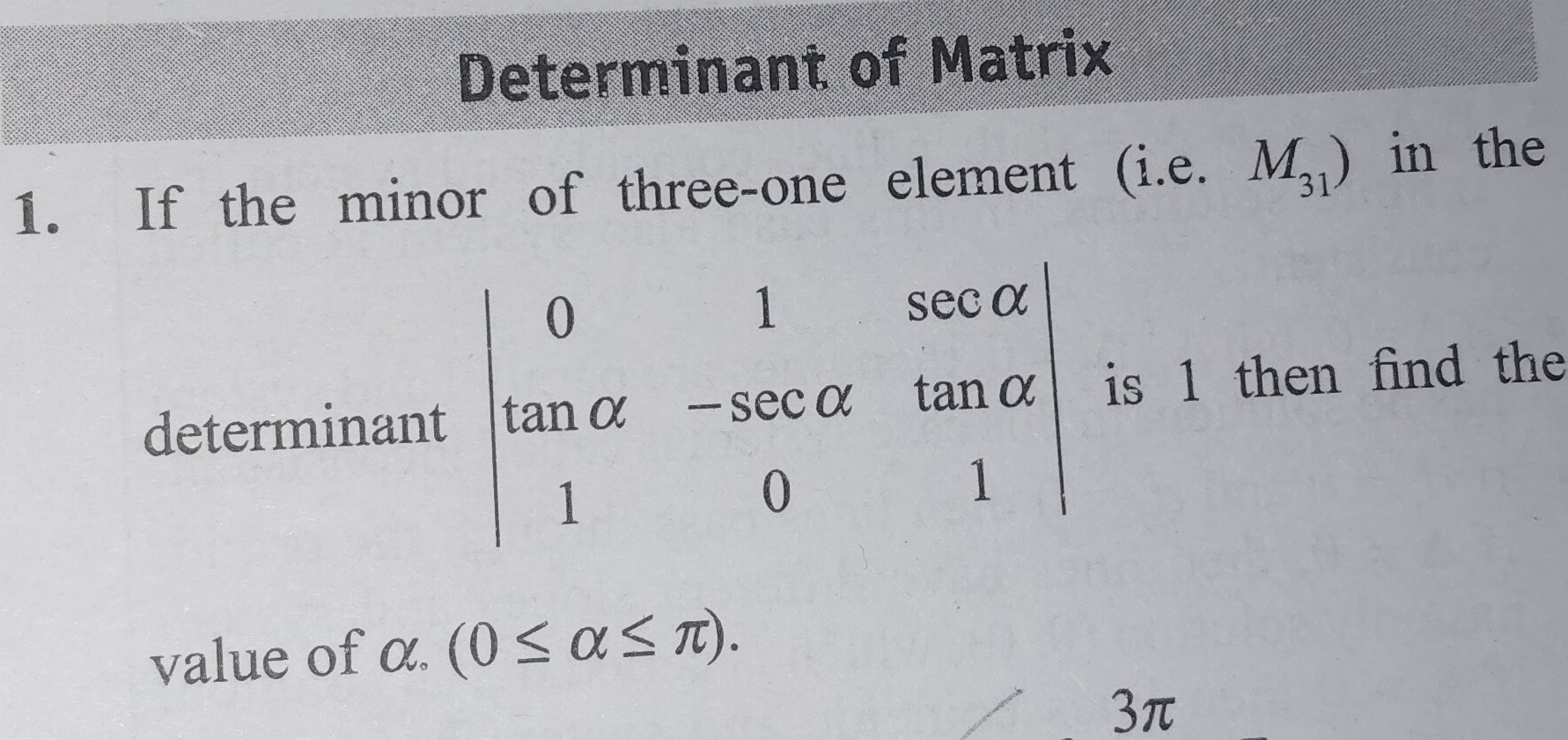Question
Question: If the minor of three-one element (i.e. $M_{31}$) in the determinant $\begin{vmatrix} 0 & 1 & \sec \...
If the minor of three-one element (i.e. M31) in the determinant 0tanα11−secα0secαtanα1 is 1 then find the value of α. (0≤α≤π).

0, 43π, π
Solution
To find the value of α, we first need to calculate the minor of the three-one element (M31) of the given determinant.
The given determinant is:
0tanα11−secα0secαtanα1The element a31 is 1. The minor M31 is the determinant obtained by deleting the 3rd row and the 1st column:
M31=1−secαsecαtanαNow, we calculate the value of this 2×2 determinant:
M31=(1)(tanα)−(secα)(−secα) M31=tanα+sec2αWe are given that the minor M31 is equal to 1. So, we set up the equation:
tanα+sec2α=1We know the trigonometric identity sec2α=1+tan2α. Substitute this into the equation:
tanα+(1+tan2α)=1 tan2α+tanα+1=1Subtract 1 from both sides of the equation:
tan2α+tanα=0Factor out tanα:
tanα(tanα+1)=0This equation implies two possible cases:
- tanα=0
- tanα+1=0⟹tanα=−1
We need to find the values of α in the given range 0≤α≤π.
Case 1: tanα=0
For 0≤α≤π, the values of α for which tanα=0 are α=0 and α=π.
Case 2: tanα=−1
For 0≤α≤π, tanα is negative only in the second quadrant. The reference angle for tanα=1 is 4π. Therefore, the angle in the second quadrant is α=π−4π=43π.
Thus, the possible values of α in the given range are 0,43π,π.
